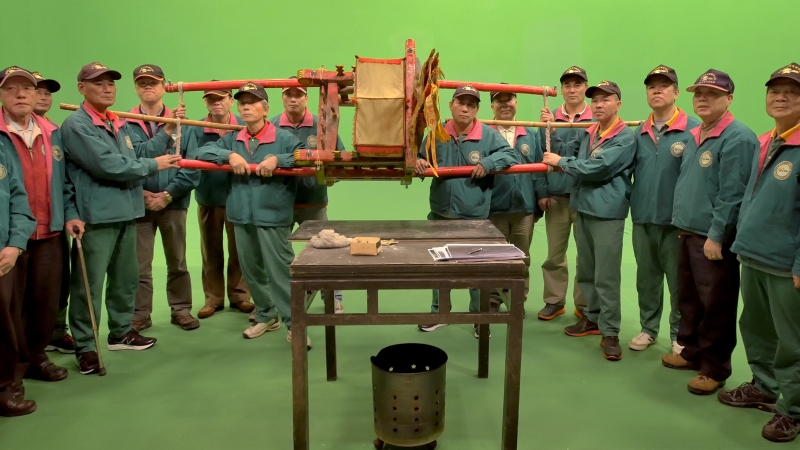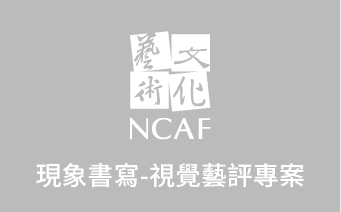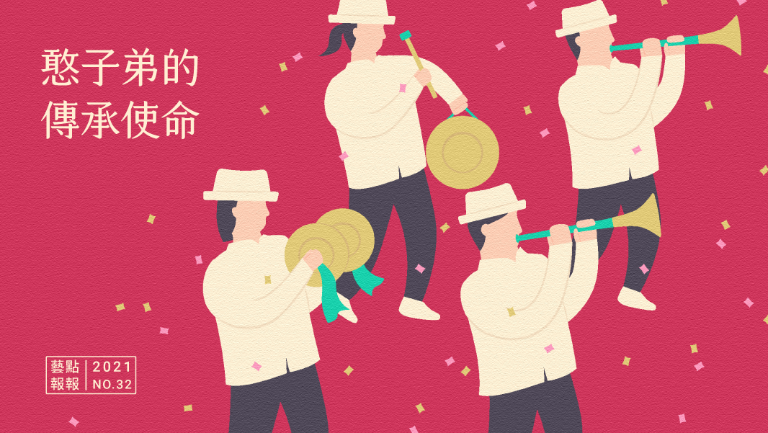Through her, the spirits of the ancestral skulls said “Thank you” in English to the people from Taiwan and the U.K. for their help in bringing them home, but the ancestral spirit sent by the Sun God then complained, “Have you forgotten our tribal language? Why didn’t you thank them in our language?”
-- Chen Yun-Lu (Central News Agency, November 5th, 2023)[1]
-- Chen Yun-Lu (Central News Agency, November 5th, 2023)[1]
The news article, “University of Edinburgh Returns Taiwanese Indigenous Skulls Taken 150 Years Ago, Marking Taiwan’s First Such International Repatriation,”[2] featured the story of Paiwan Indigenous people of the Mudan community bringing back from overseas remains of their ancestors who died during the Mudan Incident (牡丹社事件). The repatriation marked a starting point for rethinking the history of colonialism and representing indigenous peoples’ histories. A Paiwan pulingaw, or spirit medium, was arranged at the event to communicate with the ancestral spirits, with the following details provided, “These ancestors were originally reluctant to return home because they did not die of natural causes and were worried about the misfortune that they would bring to their tribe; however, after repeated persuasion and with great sincerity shown by their tribespeople emphasizing that welcoming them back to their homeland would help to pass down their historical memories, in the end, the ancestors finally agreed.”[3] An exploration of contemporary sensing technologies was opened by this, with history or memories that were concealed or forgotten explored through psychic powers, wizardry, divination, or other such means, presenting an attempt at forming an alternative understanding and interpretation of such events.
The origin behind the project that led to two of the artworks on view in Tsai Pou-Ching’s 2021 exhibition Laboratory 207 began when a friend of a professor who’s a custodian of a university’s research specimens engaged in “spirit channeling” with some human bone specimens that were put away for a long time and learned of their wish to return to the Yujing District of Tainan, Taiwan. The physical conditions of the bones, combined with the “personal recounts” given the human skeletal remains, unveiled the possibility that they could be the remains of Pingpu people, or plains indigenous people, who were involved in the Tapani Incident (噍吧哖事件).
Could such speculation lead to opportunities to be closer to history and the truth behind the origin of those remains?
Hsu Chia-Wei was invited to show his work at the 2019 Ural Industrial Biennial of Contemporary Art, and under the theme, “Immortality,” the biennial presented attempts that were intuitively carried out using various technological engineering means to explore the notion of eternal life for the contemporary body, proposing historical, political, and philosophical points of entry to respond to and reflect on the humanistic spirit that may be touched upon when considering “immortality.”[4] Spirit-writing (2016) by Hsu featured a record of the artist in conversation with the Frog God, Marshal Tie Jia, by way of a ritual involving a divination chair, with a model of the temple in the Wuyi Mountains which the Marshal was housed at a millennium ago recreated based on the oral recounts given by the god. Since the clues given about the past (such as the temple was destroyed during the Cultural Revolution) were untraceable, the divine discourse which was essentially sacred became the only approach to narrative.
On the other hand, in the 2019 exhibition, Necropolis, Necro, The Red Soil, Liang Ting-Yu explored the geology-driven co-competitive narrative of the five ethnic groups, the Hakka, the Atayal, the Ketagalan, the Taukat, and the Hoklo, in a shallow mountain juncture area between Taoyuan’s Daxi, Longtan, and Fuxing and Hsinchu’s Guanxi. Divination blocks (擲筊) were used to communicate with local deities to examine the “authenticity” of written documents and oral recounts given by local residents on decapitations carried out by indigenous people in the area and the locations of unmarked graves. Between the deities’ responses and the historical records, reflections were given on how historical events can be constructed.
How is history written? The saying that claims it is always “written by the victor” still rings true but perhaps also doesn’t fully apply in today’s time. In a time when the channels of cognition have become more complicated, art projects are seen exploring personal memories to patch the gaps found in historical events or experiences, allowing multifaceted personal life experiences that were previously latent to lead to the formation of historical narratives and identifications that are more diverse.
(In)visible Visitor (2020) by Lin Yi-Chi documented Amerasian elderlies in Taiwan with fathers who were in the U.S. military. Filmed while under hypnosis, they were guided to tap into their subconscious/memories. The artwork delicately opened up the invisible and unspeakable past of the U.S. Military Assistance Advisory Group’s time in Taiwan, seeking to put historical bodies into issues of history and identity beyond the scope of family history.
Comprised of fieldwork and nonfiction narrative video, Taboos of Three Mountains (2020) presented the interim progress of Kao Jun-Honn’s long-term project, “Topa,” which involved investigating forests and interacting with people of the Atayal tribe. In the area that is documented as the traditional area of the Ncaq tribe (or Topashe, Topa community), the artist invited foreign actors to play the role of war prisoners and to retrace the trail of the Japanese’s invasion of the Ncaq tribe, with interviews conducted with war prisoners from that time to describe the situation at the Oka Prisoner-of-war Camp in Sanxia (三峽, a district in the southwestern part of New Taipei City). Oral recounts given by several tribal elders were referenced, with portraits of their ancestors drawn according to their memories. Through physically walking through the area, geographical exploration, and interviews, records of ethnic activities at different stages of history were represented, including collective memories of the region.
History is long, but memories are short, and there have been numerous projects and artworks presenting manifestations of ghosts/gods that seek to find certain answers through different sensory modalities. These creative works, through sensorial inspirations and memory-oriented revelations, put the relationship between individuals and history into a more expansive, more human, and to a certain extent, more political field of vision.
In conclusion, which references the research project and the Podcast series—" “From Local Traditions to the Endless Search for Universal Spirituality: The Contemporary Significance of Religion and Mysticism in the Development of Contemporary Art in Taiwan” (2020) and “Superspiritual Connections and Hopes: A Technical Inquiry into Contemporary Art Creations and Mysticism Practices in Taiwan” (2021)—on the applications and expressions of mysticism in Taiwanese modern and contemporary art written and produced by Chu Feng-Yi under the support of NCAF’s Visual Arts Criticism Grant Program: “There are still so many things that are unknown, so let’s keep asking questions.”[5]
References:
[1] Chen, Yun-Lu. “特派在現場/台灣原民遺骨返還 巫師揭儀式有淚有笑「祖靈很想回家」” [On location / Indigenous ancestral bones returned to Taiwan, tribal spirit medium explained ceremony was filled with tears and laughter, “The ancestral spirits really wanted to go home”]. Central News Agency. Nov. 5th, 2023. https://www.cna.com.tw/news/acul/202311050061.aspx
[2] Akoy, Hsu, Bo-Song. “愛丁堡大學返還台灣原住民族頭骨,流落在外150年創國際首例 [University of Edinburgh returns Taiwanese indigenous skulls taken 150 years ago, marking Taiwan’s first such international repatriation]. Initium Media. Nov. 18th, 2023. https://theinitium.com/article/20231118-whatsnew-taiwan-indigenous-people-skeleton
[4] ARTouch Editorial Department. “以「永生」為題,第五屆俄羅斯「烏拉爾當代藝術工業雙年展」” [5th Ural Industrial Biennial of Contemporary Art under the theme, “Immortality” ]. ARTouch. July 18th, 2019. https://artouch.com/art-views/art-exhibition/content-11434.html
[5] Chu, Feng-Yi. “Questions Concerning Technologies of Reappearing Mystical Experience in Taiwanese Contemporary Art”. https://archive.ncafroc.org.tw/upload/result/18513-CR1001/07%20台灣當代藝術裡鬼神顯現的技術追問_1661237452372.pdf
*Translator: Hui-Fen Anna Liao









